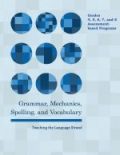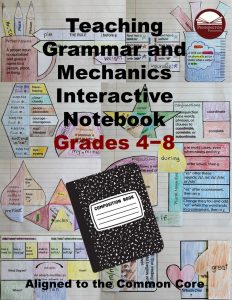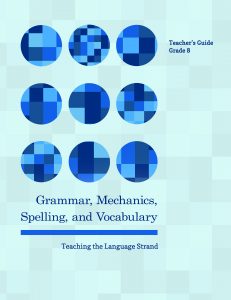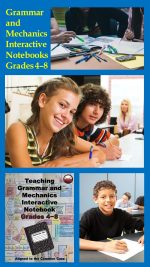Grammar Quiz for Teachers
See how much you know about grammar by taking the 10 Question Grammar Quiz for Teachers. Don’t worry; I’ll dispense with the usual “If you score 9 or 10 out of 10, you are…” Let’s keep things fun! Take out a pen and some scratch paper. Number from 1‒10.
First, let’s get the obvious out of the way. I wrote this quiz to sell my grammar books to teachers. I selected quiz items from the grades 4‒8 Common Core Anchor Standards for Language. Helpful links follow each question if you want to learn explore the grammatical topics.
The answers to the multiple-choice questions follow my promotional materials to ensure that you glance at my books. I would be happy to explain any of the distractors. Comments are welcomed (not welcome).
Grammar Quiz for Teachers
1. When multiple adjectives are used within a sentence, the adjectival types should follow this order:
A. Which one? How many? What kind? B. What kind? Which one? How many?
C. What kind? How many? Which one? D. How many? Which one? What kind?
2. When multiple adverbs are used within a sentence, the adverbial types should follow this order:
A. Where? What degree? How? When? B. How? When? What degree? Where?
C. When? How? Where? What Degree? D. What degree? How? Where? When?
I know you’re craving examples at this point, but we need to teach the rules, so that students will be able to apply them and not solely depend upon oral language proficiency.
3. A past participle is best described by what part of speech?
A. Adverb B. Adjective
C. Verb D. Conjunction
http://www.grammar-monster.com/glossary/past_participles.htm
4. Examples of correlative conjunctions include the following:
A. unless, despite B. for, nor
C. either, or D. however, then
http://www.chompchomp.com/terms/correlativeconjunction.htm
5. Examples of coordinate adjectives include the following:
A. dark green moss B. homemade apple pie
C. heavy, bulky sweater D. delicious, low-fat, dessert
https://www.quickanddirtytips.com/education/grammar/commas-with-adjectives
6. Which of the following does not describe a function of the present perfect verb tense (or form, if you prefer)?
A. A physical or mental action or a state of being happening or existing before the present
B. An ongoing action happening or existing now
C. An action that took place at some unidentified time in the past that relates to the present
D. An action that began in the past but continues to the present
https://blog.penningtonpublishing.com/tag/perfect-verbs/
Okay, so you’re probably not going to get all of these answers correct. I’m sure it’s just the way I’ve phrased the questions and/or answers.
7. Identify which answer provides James as the subject of this sentence:
A. Running helped James lower his body fat.
B. Why is James asking if Sheena wants dessert?
C. The teacher of the year is James.
D. The birthday party for James was orchestrated by his closest friends.
8. The grammatical problem in this sentence is a dangling modifier:
A. Re-reading the question clearly improves the accuracy of your answers.
B. I dusted always on Tuesdays.
C. He acted more conspicuously than I.
D. Fired from her job, her car became her home.
https://owl.english.purdue.edu/owl/resource/597/1/
9. The grammatical problem in this sentence is the use of an indefinite pronoun reference:
A. He did have pens, but we didn’t need any right now.
B. I called Jesse’s work, but he never answered.
C. None were happier than he.
D. Peter was a brilliant chemist and teacher. That is why his students loved his class.
https://www.grammarly.com/blog/pronouns/
10. Which one of the following sentences includes a direct object?
A. To him I gave my favorite ring.
B. “Is this Marsha?” “It is I.”
C. The popcorn seems too salty for most people.
D. Ismelda acts nicely when no one is looking.
http://www.write.com/writing-guides/general-writing/grammar/direct-and-indirect-objects/
Want to take the Mechanics Quiz for Teachers? Check it out after you correct your grammar quiz.
Quiz Answers
- A 2. D 3. B 4. C 5. C 6. B 7. B 8. D 9. C 10. A
*****

Pennington Publishing Grammar Programs
Teaching Grammar, Usage, and Mechanics (Grades 4, 5, 6, 7, 8, and High School) are full-year, traditional, grade-level grammar, usage, and mechanics programs with plenty of remedial practice to help students catch up while they keep up with grade-level standards. Twice-per-week, 30-minute, no prep lessons in print or interactive Google slides with a fun secret agent theme. Simple sentence diagrams, mentor texts, video lessons, sentence dictations. Plenty of practice in the writing context. Includes biweekly tests and a final exam.
Grammar, Usage, and Mechanics Interactive Notebook (Grades 4‒8) is a full-year, no prep interactive notebook without all the mess. Twice-per-week, 30-minute, no prep grammar, usage, and mechanics lessons, formatted in Cornell Notes with cartoon response, writing application, 3D graphic organizers (easy cut and paste foldables), and great resource links. No need to create a teacher INB for student make-up work—it’s done for you! Plus, get remedial worksheets, biweekly tests, and a final exam.
Syntax in Reading and Writing is a function-based, sentence level syntax program, designed to build reading comprehension and increase writing sophistication. The 18 parts of speech, phrases, and clauses lessons are each leveled from basic (elementary) to advanced (middle and high school) and feature 5 lesson components (10–15 minutes each): 1. Learn It! 2. Identify It! 3. Explain It! (analysis of challenging sentences) 4. Revise It! (kernel sentences, sentence expansion, syntactic manipulation) 5. Create It! (Short writing application with the syntactic focus in different genre).
Get the Diagnostic Grammar, Usage, and Mechanics Assessments, Matrix, and Final Exam FREE Resource:
![]()
Get the Grammar and Mechanics Grades 4-8 Instructional Scope and Sequence FREE Resource:
![]()














